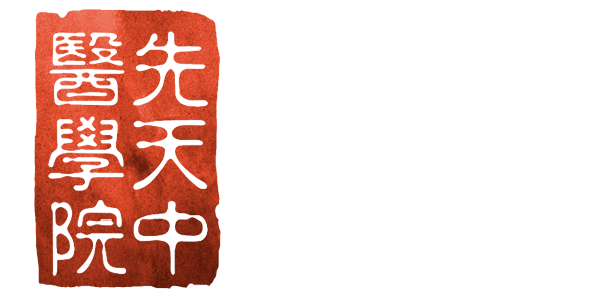
One Year Diploma in Tui Na
NEXT START DATE FOR THE TUI NA DIPLOMA: February 2025 (FULL)
Registration for 2026 is OPEN
![]()
Tui Na Bodywork is a form of Chinese medical massage mixed with physical manipulations that is taught at the Xian Tian College of Chinese Medicine. Tui Na is one of the oldest aspects of Chinese medicine and an important part of treatment for both internal conditions and musculoskeletal problems.
Push (Tui) and Pull (Na)
The terms Tui and Na literally mean ‘to push’ and ‘to grasp’ respectively, and are in fact also the names of two of the core techniques that are used within the practice of Tui Na. The reason that it was chosen to be called Tui Na, and not named after any of the other techniques such as ‘An Rou’ or even ‘An Tui’ was not simply by coincidence, but because each and every technique that is used within Tui Na should include the energetics of either Tui (to push in) or Na (to take hold, grasp, or to draw out). They essentially reflect the importance of the concept of Yin and Yang within Tui Na, with Tui being the Yang to the Yin of Na (Again, Yang is to push in whereas Yin would be to grasp and to draw out). It is important to understand this concept from the beginning, as when performing each technique, the student or practitioner’s intent and awareness is just as important as the physical techniques themselves. Understanding that with every technique you are either applying the Yang intent of ‘pushing into the body’, the Yin intent of ‘pulling out of the body’, or a combination of the two is essential.
NEXT START DATE FOR THE TUI NA DIPLOMA: February 2025 (FULL)
Registration for 2026 is OPEN
Study Tui Na
Our Tui Na Diploma is taught as a one-year long module that is offered through in-person events. All students will need to be already qualified in Chinese medicine, or to have at least completed the first year of Foundation & Diagnostics module online by the time you graduate from Tui Na. Please see further information about our next Tui Na diploma below:
SYLLABUS OUTLINE (click here)
Intro to Tui Na
Postures, Exercises, & Virtues of Tui Na
Tui Na Techniques and Manipulations
The 3 Stages of Treatment
Sinew Channel Theory
Tui Na Diagnostics & Examinations
The 4 Stages of Physical Trauma
Cupping Therapy
External Herbal Medicine (medicated liniments), how to make them and how to apply
5 Supervised Clinical Practice Days
Daily open discussions and Q&A of Chinese Medicine
Teacher: Rob Aspell (UK Course) / Damo Mitchell (Bali Course)
Duration: 25 days (spread over eight events)
Cost: £2500 (£250 deposit to secure your place, followed by £1125 in Feb, then £1125 in Aug).
Location: Liverpool, UK
Sinew Channels (Jing Jin)
Tui Na is essentially an external therapy, and although it does not directly affect the internal organs, it has the ability to treat internally (meaning it can treat and regulate the functioning of the internal organs of the body).
Tui Na works directly with the Sinew Channels and the Wei Qi (衛氣), which in turn affects the primary channels and the flow of Ying Qi (營氣) to the internal pathways and therefore the Zang Fu organs.
The channel systems do not only include the physical systems of the body (such as the skin, circulatory, nervous, sinews and others), but are also energetic extensions of the organs, directing Qi and Blood to and from the organs and connecting the body as a whole.
By regulating the flow of Qi and Blood to the internal organs via the channel system, and ensuring that there are no blockages of the internal pathways, the body can begin to self-regulate and heal itself from within. What’s more, by using acupressure to individually activate specific acu-points along the primary channels, the practitioner can use the functions of the body’s both physical and energetic system to regulate the body.
Many techniques involve opening the channels by creating space within them and relaxing the tissues around them to reduce and remove stagnation, enabling the Qi and Blood to flow smoothly to nourish the internal organs.
In order to treat internally however, it is important to understand the theories and diagnostics of Chinese medicine, with focus on the relationships between the Zang Fu organs themselves, and their relationships with the vital substances and their circulation.
The Practice of Tui Na: Principles, Diagnostics and Working with the Sinew Channels
“Tui Na can be used as much more than a musculoskeletal therapy, but in order to use it to its full potential as a medical intervention, it is essential to understand its uses on the Sinew channel system as opposed to the other channel systems commonly used within acupuncture. Tui Na requires an understanding of the principles and pathways of the Sinew channels as a standalone system of the body, as well as its relationship to the other channel and organ systems, and this book provides an accessible introduction to these channels before moving onto Tui Na practice. There are Sections on Diagnosis and Assessment, Techniques and Treatments with hand and joint manipulation techniques covered in detail, along with instruction on developing a Tui Na prescription and protocols for the treatment of common conditions.
This book can be used by beginners studying on a hands-on practical course in Tui Na, in addition to qualified Chinese medicine and Tui Na practitioners.”
This invaluable book for Tui Na practice is the handbook for the courses taught within Xian Tian College of Chinese Medicine and it was written by one of our tutors, Rob Aspell. This book can be found on Amazon and other main book retailers.
Get in touch...






